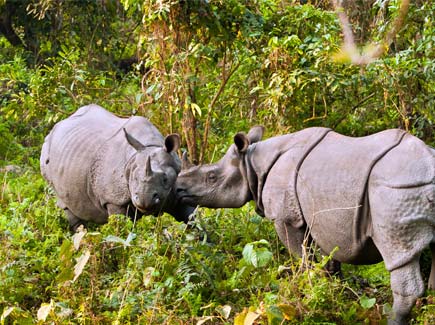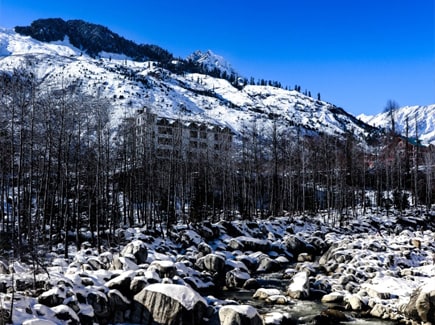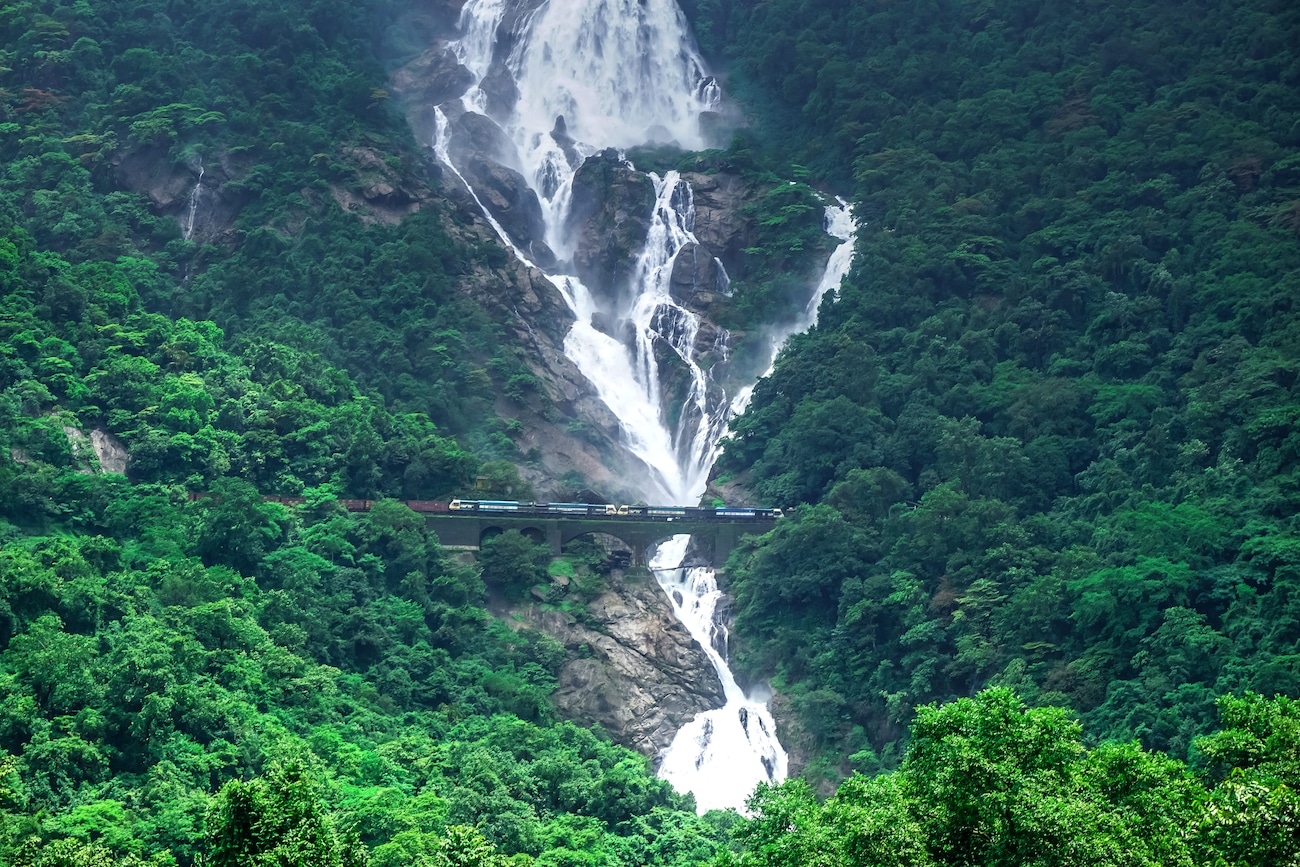Published in the Sunday Mumbai Samachar on 17 March, 2024
I always tell everyone; India is indeed incredible. If you just think about it, the four farthest points of India—Siachen Glacier in the north, Indira Point in the south, Kibithoo in the east, and Guhar Moti in the west—span vast distances across diverse landscapes. From the northernmost to the southernmost point, the distance is over 3,000 kilometers, a testament to the vertical expanse of our country. Similarly, from the easternmost to the westernmost point, the country stretches for about 3,000 kilometers, showcasing India’s vast horizontal spread. The distance between these points is testament to the vastness of India's territory and the diversity of our geography and culture. And one thing that India has in abundance, are waterfalls!
India is home to some of the most stunning waterfalls in the world. From the towering plunge of the Jog Falls in Karnataka to the scenic beauty of the Nohkalikai Falls in Meghalaya, these natural wonders are spread across the country's vast geography, each telling a story of its own. Waterfalls in India are not just tourist attractions; they are part of the local culture and ecology, contributing significantly to the biodiversity of their regions.
So today, I wanted to go on a journey through the cascading waters of India, exploring the unique features that make each waterfall a marvel to behold. Whether you're an adventure seeker, a nature lover, or someone who appreciates the calmness of natural landscapes, India's waterfalls offer something for everyone. So let's dive into the world of these magnificent natural wonders and discover the beauty and majesty they hold.
Let’s start with Northern India. The northern region, particularly around the Himalayas, is home to some awe-inspiring waterfalls. These falls are often fed by melting snow and glaciers, making them particularly majestic during the spring and early summer months. Yamuna Falls in Uttarakhand is a prime example, offering a breathtaking view as the water falls down rocky terrains into serene pools below.
Jogini Falls near Manali, Himachal Pradesh, is another notable mention. It's a short trek from the Vashisht Temple in Manali, offering visitors a refreshing dip in its chilly waters surrounded by picturesque views of the valley. Another notable mention is the Bhagsu Waterfall, situated in McLeod Ganj in Himachal Pradesh, which not only is a stunning sight but also holds spiritual significance for the local communities. The waterfall is accessible after a short walk from the Bhagsunath Temple, making it a perfect combination of spirituality and nature’s beauty.
Moving south, Southern India is renowned for its lush landscapes and abundant rainfall, creating the perfect conditions for spectacular waterfalls. The Jog Falls in Karnataka, one of India's tallest and most famous waterfalls, dramatically drops in a segmented fashion, creating a magnificent view. It is one of India's tallest at 830 feet, and when you witness it, it is an iconic site where the Sharavathi River leaps into a deep gorge in four distinct cascades, aptly named Raja, Rani, Rover, and Rocket. Unlike many other waterfalls, Jog Falls does not stream down the rocks; instead, it plunges down in a single drop, making it a spectacular sight.
Athirappilly Falls in Kerala are often referred to as the "Niagara of India." This is Kerala’s largest waterfall and offers a picturesque scene with its wide, plunging waters amidst the tropical forest. It is set against the backdrop of the Sholayar ranges and offers a breathtaking view of water cascading down to the Chalakudy River. Another notable waterfall in South India is Tamil Nadu's Courtallam Falls, known as the 'Spa of the South'. It is renowned for its medicinal properties and the sheer number of visitors it attracts. The water flows through forests of herbs before cascading down the rocks, offering a natural, therapeutic experience.
The eastern and northeastern parts of India, characterized by their hilly terrains and heavy rainfall, boast some of the most unique and remote waterfalls. Nohkalikai Falls near Cherrapunji, one of the wettest places on earth, is the country's tallest plunge waterfall. Falling from a height of 1115 feet, it offers spectacular views, especially during the monsoon when it is at its most powerful. Dudhsagar Falls, on the Goa-Karnataka border, is another of India’s tallest waterfalls, with a height of 310 meters. These falls were prominently featured in the famous Bollywood movie "Chennai Express." The falls resemble a stream of milk descending through the mountains, hence the name ‘Dudhsagar’ which means ‘Sea of Milk’. The remoteness of many waterfalls in these regions adds to their mystique and allure, inviting the more adventurous travellers.
Speaking of western India, a notable mention are the Thoseghar Waterfalls in Maharashtra. Located near Satara, Thoseghar Waterfalls is a seasonal waterfall that comes to life during the monsoon. Surrounded by the lush greenery of the Western Ghats, it offers a tranquil escape for nature lovers.
These diverse regions of India showcase the rich natural beauty and ecological significance of its waterfalls. Each area offers a unique experience, from the snow-fed cascades of the north to the tropical torrents of the south and the monsoon-fed spectacles of the east and northeast.
Visiting India's magnificent waterfalls can be a memorable experience if planned thoughtfully. Remember, timing is key! The best time to visit most waterfalls is during the monsoon or just after, when they are at their fullest. But you should also always adhere to safety signs and guidelines. Rocky areas can be slippery, and water currents strong. Keep a safe distance from the edge and follow local advice. And after a few nice tours that I have done, here are three of my top travel tips. 1. Bring reusable water bottles and sunscreen lotion so that you are hydrated and don’t suffer from sunburn. 2. Wear comfortable, water-resistant clothing (not jeans) and sturdy shoes for trekking. A raincoat or umbrella is essential during the monsoon season. 3. And, if like me, you love photography, your smartphone can be your best friend for capturing the beauty of the falls. But make sure that you protect your phone from water and moisture.
So yes, India's waterfalls are not just natural attractions; they are a testament to the country's incredible biodiversity. I can surely say that visiting these waterfalls will mean that you will create memories of a lifetime. Adventure awaits in the heart of India's landscapes, where every waterfall tells a story of nature's majesty and the vastness of Incredible India! So Chalo, Bag Bharo Nikal Pado!











































Post your Comment
Please let us know your thoughts on this story by leaving a comment.